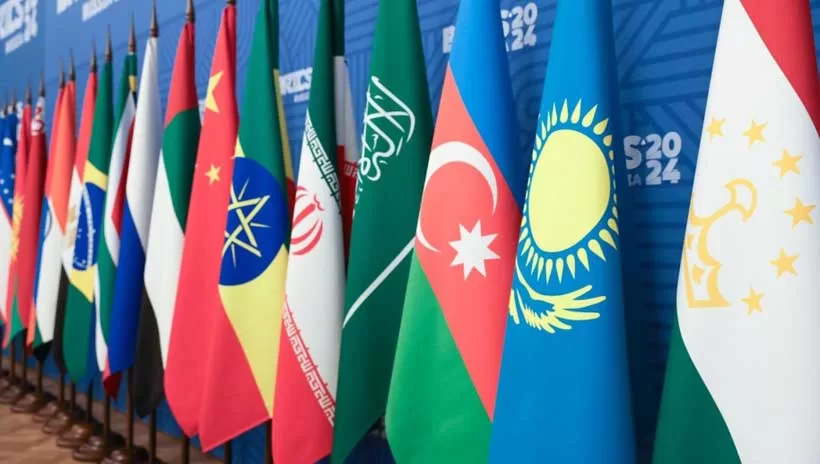BRICS+ refers to the BRICS group (Brazil, Russia, India, China, and South Africa), along with several other emerging economies expressing interest in joining. As a collective, BRICS nations account for around 25% of global GDP and 40% of the world’s population. By expanding to include more nations, BRICS+ aims to enhance its influence, potentially pushing its economic share above 30% of global GDP. The group contributes significantly to global production, including raw materials, manufacturing, and energy, positioning itself as a counterweight to Western-dominated economic blocs.
Since its initial formation, BRICS has expanded beyond its original five members, welcoming a more diverse range of countries, including allies and rivals of the U.S. This group is complex, comprising democratic and non-democratic states with economies that vary widely, from Ethiopia’s modest GDP to China’s global powerhouse. Analysts like Sarang Shidore highlight that BRICS can be viewed as having two main blocs: the “Global East” (e.g., China, Russia) often countering the U.S., and a more neutral “Global South,” with members like Egypt and the UAE, that maintain ties with the West. This mixed composition demonstrates BRICS+’s ambition to create a multipolar world order by connecting diverse economies.
Initially formed as a coalition of emerging economies, BRICS has evolved into BRICS+ and seeks to emerge as a counter-hegemonic force against the U.S. and other Western nations. Importantly, BRICS lacks an official headquarters or centralized leadership structure. It is not a traditional intergovernmental organization, but it aspires to function as a unified counterweight to Western dominance. However, can this ambition be realized?
The 16th BRICS summit recently convened in Kazan, Russia, where influential leaders from the Global South and developing nations gathered. Russia appeared to be showcasing its resilience to the Western world through this summit, yet critical discussions and initiatives also took place.
During the summit, Russian President Vladimir Putin underscored the need for a new payment and currency system to challenge today’s dollar-based financial system, particularly advocating for the replacement of the SWIFT payment system. Putin’s vision seeks to dismantle the dollar’s dominance in global trade, a movement often referred to as de-dollarization. However, achieving this goal is fraught with challenges. To replace an established system, an effective alternative must be proposed. Currently, the BRICS nations have not clearly articulated such alternatives, instead appearing to issue threats toward the U.S. and its allies. The New Development Bank (NDB), established to support this vision, has issued only $33 billion in loans, highlighting its limited capacity.
Diverging Priorities and Rivalries Among BRICS+ Nations
The effectiveness of BRICS+ is further complicated by the differing priorities and rivalries among its member nations. Countries like Russia and China are eager to reduce their reliance on Western-dominated financial systems. In contrast, others, such as India and the UAE, prefer a more cautious approach that allows for the gradual elevation of their own currencies in global trade. For instance, Brazil and South Africa are open to trading in renminbi (RMB) but have not strongly advocated for a full shift away from existing financial structures.
These diverging priorities create significant challenges for achieving a cohesive strategy within BRICS+. Geopolitical rivalries further complicate collaboration, particularly between India and China, which have ongoing territorial disputes. Additionally, Brazil’s focus on environmental issues may clash with the priorities of resource-rich nations like Russia. This range of commitments complicates BRICS+’s ability to present a unified front.
Furthermore, the ongoing U.S.-China rivalry significantly impacts BRICS+ dynamics. As China seeks to expand its influence through initiatives like the Belt and Road Initiative, other BRICS members may feel apprehensive about China’s growing economic power. This concern can lead countries like India and Brazil to be cautious in fully embracing Chinese leadership within the group.
Moreover, the NDB, designed as an alternative to Western financial institutions, faces limitations. With a loan book of $33 billion, the NDB lacks the scale of major institutions like the World Bank, which estimates that approximately $94 trillion is needed globally to address infrastructure gaps. Consequently, BRICS cannot rely solely on the NDB to drive its global influence.
The U.S. dollar remains deeply embedded in global trade and finance, primarily facilitated through the SWIFT network. Transitioning from this established system requires creating new, internationally trusted financial infrastructure, a goal that BRICS has yet to fully achieve. Additionally, China’s significant role in this initiative, including hosting the NDB in Shanghai and promoting the RMB, raises concerns among other BRICS members about a potential imbalance of influence. Countries like India may approach commitments with caution, fearing overdependence on China.
In conclusion, while BRICS+ represents a significant coalition of emerging economies striving to challenge the dominance of Western powers, its effectiveness is hindered by internal divisions, competing priorities, and geopolitical rivalries among its members. Aspirations for a multipolar world order and de-dollarization, while compelling, face substantial obstacles.
To strengthen its position, BRICS+ must find common ground among its diverse members and address individual concerns to forge a cohesive strategy. Specific steps could include establishing clearer communication channels among members, prioritizing economic cooperation projects that benefit all parties, and actively promoting the NDB to increase its financial capacity.
Ultimately, the success of this coalition in becoming a credible counterweight to Western influence will depend on its ability to navigate these complexities and create a united front that promotes mutual interests. By addressing these internal challenges, BRICS+ has the potential to transform from a symbolic alliance into a potent force capable of reshaping global economic governance.
